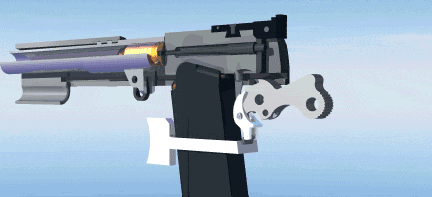Being new to semi-autos (and being concerned about my Taurus PT-111 being VERY RELIABLE), I was wondering if my Taurus was functioning normally. Here is how it works.
Looking at the rear of the barrel, there is a piece of metal that extends down from the end of the barrel (it is kind of like "ramp" - not sure what it is actually called.)
When the slide pushes the bullitt forward, instead of going straight into the bore, it hits way down on the ramp. This ramp is VERY "steep". Most of the time it hits low and slides up the ramp and everything is fine. When it DOESN'T slide up the gun jams and you can easily see that the bullitt only obscures about 15-20% of the diameter of the bore. (Not even close) Actually, it is slightly more reliable if I push the magazine upward when the slide comes forward (bullitt will initially hit the "ramp" higher and closer to bore.)
I actually have 2 questions.
1. Is this NORMAL? Should the bullitt hit very low and have to be deflected into the bore?
2. If this IS normal, it is normal to have jams when the gun is new? Could this "ramp's" angle be too steep or should it be polished?
Thanks guys! I really appreciate all the help!
Looking at the rear of the barrel, there is a piece of metal that extends down from the end of the barrel (it is kind of like "ramp" - not sure what it is actually called.)
When the slide pushes the bullitt forward, instead of going straight into the bore, it hits way down on the ramp. This ramp is VERY "steep". Most of the time it hits low and slides up the ramp and everything is fine. When it DOESN'T slide up the gun jams and you can easily see that the bullitt only obscures about 15-20% of the diameter of the bore. (Not even close) Actually, it is slightly more reliable if I push the magazine upward when the slide comes forward (bullitt will initially hit the "ramp" higher and closer to bore.)
I actually have 2 questions.
1. Is this NORMAL? Should the bullitt hit very low and have to be deflected into the bore?
2. If this IS normal, it is normal to have jams when the gun is new? Could this "ramp's" angle be too steep or should it be polished?
Thanks guys! I really appreciate all the help!

